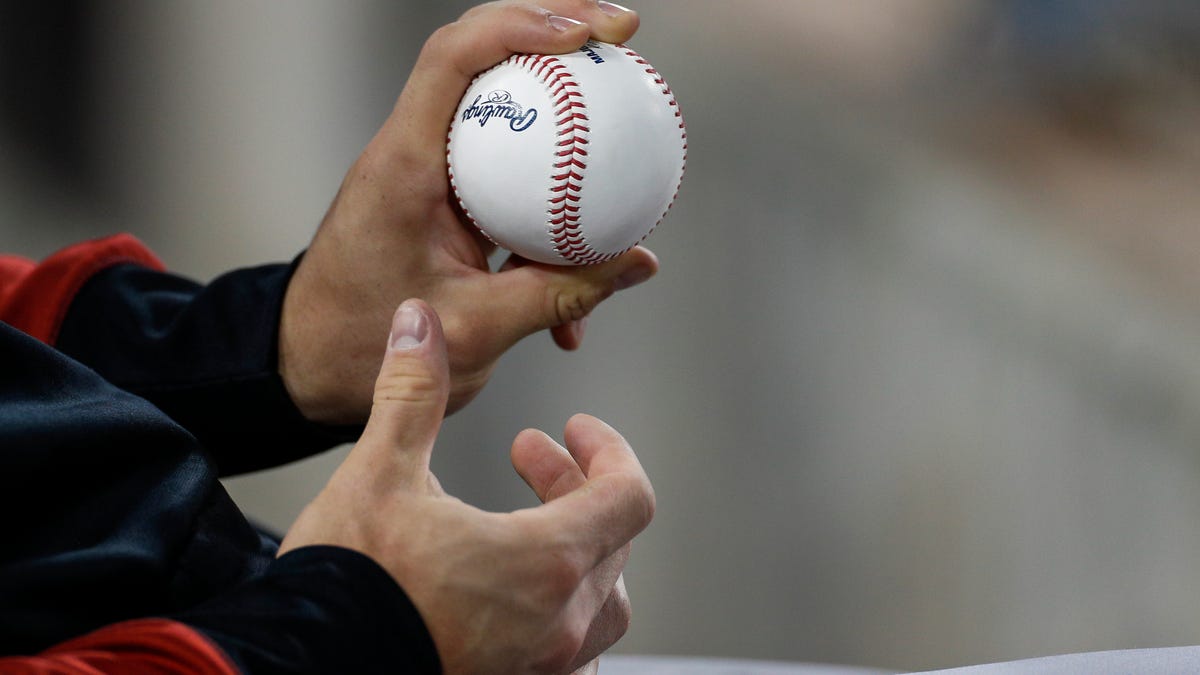Get to know your new MLB rules

Leather is popping, grunts from a mound are being emitted, and GMs are already coming up with lame excuses in the sun — it must be spring training! Pitchers and catchers have reported in Florida and Arizona, and very soon there will be actual games played. They won’t count, of course, and will be accompanied by a lot of “best shape of his life!” stories while a lot of guys wearing No. 75 finish out the last few innings. But what they will be is our first look at MLB’s rules changes, in the hopes that all the kinks get worked out before they turn the lights on for real.
So let’s get to know them and…well, maybe not love them. They’re rules after all. No one loves rules. That’s not what we do here. But just know them.
Pitch clock
This is the one that should have the most noticeable effect, which is speeding up the game. Pitchers will have 15 seconds from the time the throw back from the catcher hits their glove to start their delivery with no one on base, and 20 with runners on. Technically, the clock shouldn’t start until the pitcher is back on the dirt of the mound, but should any of them try some shenanigans and kind of wander around the grass to delay the clock, the home plate ump can call for the clock to start anyway.
Pitchers will only get two disengagements per batter, which means they can only step off or attempt a pickoff twice before they have to come home with a pitch or be penalized with a balk. If a runner advances–stealing a base, wild pitch, balk, the like–that count restarts.
And this is where some fascinating things will happen. We know from minor league data that the pitch clock will speed up the game, which is what MLB is really after. It shaved nearly half an hour of game time in the minors last year. But we’re nerds, and we want to get into the unseen nuances, because the unseen nuances are where baseball lives.
G/O Media may get a commission

Available Now
Samsung Galaxy S23 Series
Free $100 credit or gift card.
Samsung’s newest line of Galaxy phones—the S23 Ultra, S23+, and S23—are available now. Receive a free $100 credit or gift card with your purchase.
With only two pickoffs allowed, the hope is that base-stealing will once again return to a prominent weapon in an offense’s arsenal. One can easily imagine baserunners taking gargantuan one-way leads in the hopes of getting a pitcher to burn his two pickoffs and giving themselves a runway to second or third thereafter. Do pitchers just leave them out there in that case, some 15 feet from first? Do they get baited?
The other component is the actual clock. Alert runners will know when the clock is running down and can possibly time their jump to it. Especially if a pitcher has already used both of his pickoff attempts. Even if a pitcher doesn’t run down the clock to avoid this, a runner will know he won’t be holding the ball forever. Pitchers will probably be in a hurry to get into the stretch so they have more of a window to vary their delivery time, which should only speed up the game more.
While the shorter game times may come as a relief for fans already watching, it’s a question if they will attract new fans, which is clearly MLB’s hope. Two hours and forty-five minutes probably still sounds like an eternity to those not already inclined to baseball. Even with the pitch clock, there’s still a lot of nothing in that two hours and forty-five minutes of baseball.
Another outcome that is hoped for by some is that the pitch clock might tone down, ever so slightly, velocity from pitchers, especially relievers. Without being able to take a full minute to gather themselves and then max-effort the next pitch, hitters might be hoping for a better chance at catching up to say, 99 instead of 102. There isn’t evidence of that, but hope springs eternal.
Shift Ban
This is the other main one you’ll hear about this season, and also easy to spot. Infielders must remain evenly split on either side of second base, i.e. two fielders on each side, and have their feet on the dirt when the pitcher releases the ball. Should a team not comply the pitcher will be penalized with a ball. And no, fielders can’t stand in one spot when the pitcher begins his delivery and try to run over to a new spot during it.
The idea here is that it will open up more holes around the field for hitters, but that hasn’t proven to be the case in experimentation in the minors. The hits that batters gain from finding a spot where a fielder used to shift to have been equaled out by the ones they lose thanks to fielders being where they used to shift away from. Think of the dribbler down the third-base line from a left-handed hitter that used to be an automatic hit. There’s going to be a guy there now.
This doesn’t solve baseball’s real problem, which is a lack of contact and a lack of action. Left-handed hitters that saw so many line drives gobbled up by a fielder standing in short right that it haunted them at night are just going to be more grip-it-and-rip it than they were, which is what resulted in the Everest of strikeouts the game is currently buried under. There were already free singles on offer before this rule, and they didn’t take them. Strikeouts actually went up in Double-A last season. Where fielders stand doesn’t have an effect on the guys on the mound throwing actual lightning or sliders that bend time.
But you better get ready for a whole lot of bellowing from commentators the first time Anthony Rizzo hits a line drive that goes over the second baseman’s head and lands in front of the right fielder about how the ban on shifts works and it’s a whole new game. The confirmation bias will flow like the Mississippi.
Bigger bases
You’ve probably already seen a host of articles about baseball beats arriving at spring training complexes and being wowed by the sight of new bases. This might help with stolen bases too, and certainly will with player safety and maybe even some of those cheap-ass reviews where a player slides off for half a second and the tag remains on him. Should be easier for runners to hang on with more base to aim at.
Pitching motion restrictions
Ever watch a pitcher constantly rock back and forth, even in the stretch, never seeming to come still, and wonder how that isn’t a balk? Looking at you, Kevin Gausman. Or maybe you, Kenly Jansen. Well, that shit is going to stop too, as umps will be cracking down on pitchers who don’t come to a full pause before delivering in the stretch.
Also, when out of the windup, a pitcher will only be allowed to take one step to the side or back to start their motion, instead of doing a Rockettes routine that we’ve seen out of the likes of Houston’s Luis García. This is probably just aesthetics, and one pitcher is definitely going to lose his rag over it because baseball players love nothing more than being overly bitchy about something minuscule, but that’s about it.
For more baseball thoughts like whether or not Sam can stay up late enough consistently enough to watch all the Seattle Mariners games he’d like, follow him on Twitter @Felsgate
For all the latest Sports News Click Here

